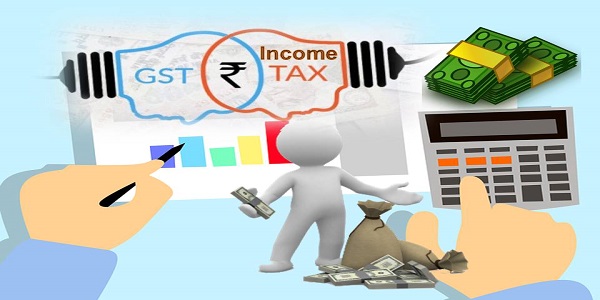The advent of the goods and services tax (GST) is undoubtedly one of the most momentous reforms in the history of Indian economy. With over 11 different types of individual taxes rationally subsumed in a single tax purview, the GST regime has indeed set an example of discreet and distinctive Indirect Taxation policy for many developing nations.
It would be no exaggeration if said that GST is altogether a game changer for the Indian Economy.
On the contrary, it’s undeniable that loopholes are ineluctable even in the most impeccable system. Such discrepancies and procedural slip-ups in fiscal policy pave the way to the tax evasive practices.

Page Contents
- #1. How perfectly has the GST policy prevented tax evasion?
- #2. How do the disparities in GST structure pave a way to the GST tax evasion?
- #3. How will the GST revenue leakage affect the nation as the whole?
- #4. What should be a strategy to combat the GST revenue leakage?
- #5. How will the government ensure the integrated tax policy?
- #6. How does the GSTR-9 return prevent tax evasion?
- #7. What action will the government take to check window dressing?
- #8. How will the new GSTR-9 model help in assessing the actual sales figure?
- #9. What is the guarantee to get correct information of taxpayers with the new GSTR-9 model?
#1. How perfectly has the GST policy prevented tax evasion?
Disparagingly, when the tax authorities are all set to perk up the infrastructure for GST implementation to make the system more conducive for easy GST registration procedure and convenient GST Return Filing mechanism so that the business entities all over India can easily adapt to the progressive tax regime, there are still some deceitful money magnates who find an escape cock to GST payment. In most cases, they manage to do so by understating their sales figure while the GST Return Filing procedure.
#2. How do the disparities in GST structure pave a way to the GST tax evasion?
Often the lack of proper coordination between different revenue departments widen the gap holes in the revenue machinery and facilitate tax evasion. The deliberate defaulters or the unethical taxpayers take undue advantage of the leniency of the tax policy and wrongly state their receipts in their GST Returns.
This is the major factor behind constant revenue leakage despite a transparent and scrupulous GST structure.
#3. How will the GST revenue leakage affect the nation as the whole?
The mismanagement of the tax compliance procedure encourages the black money problem, something which creates a vicious cycle that causes disparity in the economy, facilitates terror funding and other menaces like money laundering etc. All this leaves the honest taxpayers vulnerable, strips the State of its much-needed revenue and ultimately ruins the economy of the nation.
#4. What should be a strategy to combat the GST revenue leakage?
The only way to check the GST tax evasion and maintain tax buoyancy is an integration of direct and indirect tax mechanisms for tracing GST defaults. In this regard, the Income Tax authorities have now come forward to take proactive steps to trace the entities whose income tax return contain intentional discrepancies in comparison with their GST return filing. Mostly, their GST returns are altered to ease tax evasion.
#5. How will the government ensure the integrated tax policy?
In order to check the discrepancies arising between ITR filing and GST return filing procedure, as the government seeks to tighten rules to deter companies from evading taxes. For this, the tax assessees are required to file the GSTR-9 return.
#6. How does the GSTR-9 return prevent tax evasion?
The GSTR-9 is the summarized annual GST return that specifies all the details regarding sales and purchases that have arisen throughout the financial year. Just like the income tax return, it records all the sources of revenue and expenses of a business within the year.
#7. What action will the government take to check window dressing?
The government is currently working on the to modify the annual GST return filing model. As to get a 360-degree profile of a taxpayer, the GST authorities will rework the annual GSTR-9 form. The new model will possibly require all details of taxpayers’ income tax return filing as to assess if the sales turnover is understated.
This will definitely deter the taxpayers from evading GST liability.
#8. How will the new GSTR-9 model help in assessing the actual sales figure?
As discussed above, the taxpayer will need to report the details of their income that they’ve entered while e-filing of income tax return in the proposed annual GST return filing model. This will help the authorities to link various databases to track relevant info about a Companies that have got GST registration— its financial transactions, details of business registration and direct & indirect tax filings.
#9. What is the guarantee to get correct information of taxpayers with the new GSTR-9 model?
It is an evident fact that the annual GSTR-9 return gives details of sales & purchases in a year, and the ITR Filing of a company shows the income derived from the difference of those sales & purchases. Thus, integration of the two will result in easy tracking of sales figure.
Moreover, the ITR Filing due date for companies is 30th September and then for GSTR-9 is 31st December. As we see, there is a little gap between the two, it would be easier for the tax authorities to reconcile the details in the 2 annual returns of the companies.
All in all, the proposed scheme of integration of the income tax return filing and GST return filing procedure will rule out revenue leakage and will also encourage the taxpayer to upkeep their ITR status.


















